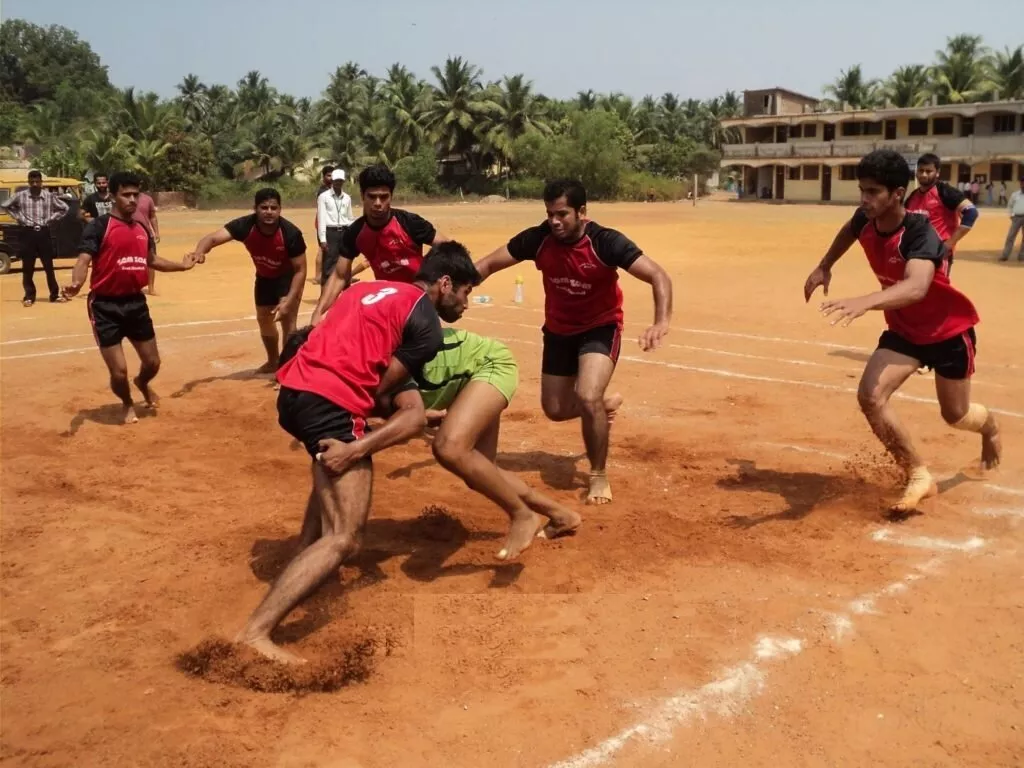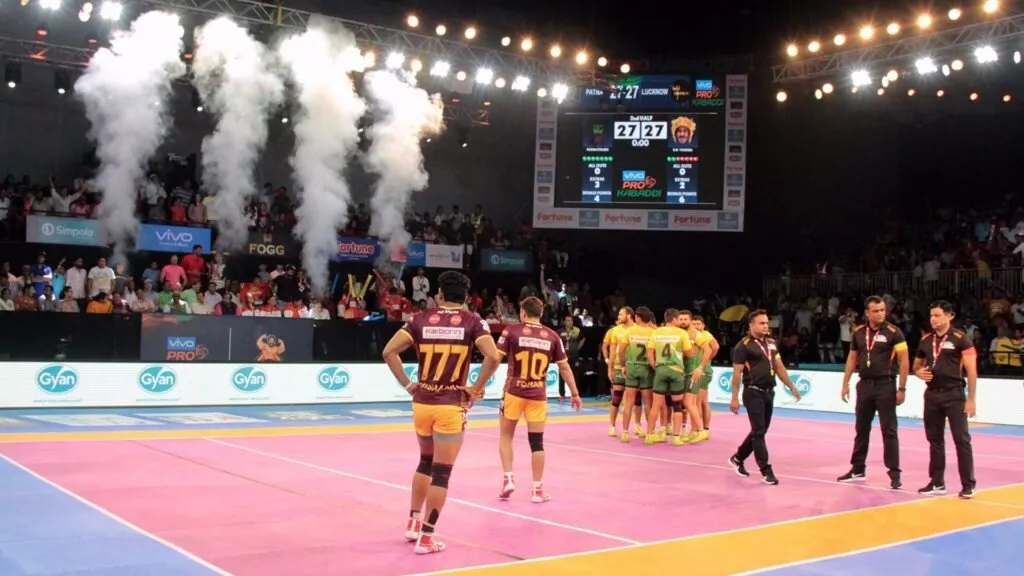Kabaddi: Origin, rules and the Pro Kabaddi League

The game is among the most popular sports in the Indian subcontinent.
Kabaddi has gained a new lease of life in the public perception ever since the inception of the Pro Kabaddi League. The commercialization of the sport has created a large audience base that has acquired a keen interest in it.
However, a significant percent of the international sports fanatics would arguably be unaware of the whereabouts of kabaddi. One of the reasons behind it could be the fact that it is not a globalized sport like football or tennis. In the 2016 Kabaddi World Cup, 12 countries had participated in the tournament.
Out of these 12, merely five were non-Asian nations - Argentina, Kenya, USA, South Korea and Poland. Moreover, none of them had qualified to the semifinals whereas the likes of Poland, United States of America and Argentina had finished in the last two spots of their respective groups. This is a clear indicator of the fact that kabaddi hasn’t gained much traction beyond the usual breeding grounds.
Here, we will try to put some light upon the basic history, rules and the other details of the sport to make readers acquainted with this remarkable sport.
Origin
It could be believed that Kabaddi has been prevalent in the Indian subcontinent and the neighboring countries for a considerable period of time. Over a period time, it has evolved and then gained significance on the organizational level to conduct the sport professionally.
It is said that the term ‘kabaddi’ was derived from the Tamil words 'kai', which means hand and ‘pidi’ - which translates to hand. It is also known as ‘kapardi’ in Nepal and ‘chedugudu’ in Andhra Pradesh.

Coming to the 20th century, Kabaddi was played widely across South Asia in 1930. An all-India Kabaddi tournament was arranged in 1923 wherein a committee had formulated a set of rules to be followed in that competition.
The All India Kabaddi Federation came into existence in 1950 and laid the groundwork for the Senior Men’s Nationals that were held for the first time in 1952. Furthermore, an Amateur Kabaddi Federation of India was formed in 1972. Bet On Kabaddi
It played a massive role in the expansion of the sport to the countries close to ours. The junior-level national tournaments begun being held shortly and henceforth a proper structure and framework were formed for Kabaddi in India.
Rules
In the standard style of Kabaddi, two teams comprising of seven players face off on either side of the mat. The dimensions of the playing area vary for men and women. It is 33ft x 43ft for the former and 26ft x 39ft for the latter. Both sides have five players to be used as substitutes waiting on the wings. So, the total number of players present in each squad is 12.
The match is played across two halves. Each half of play consists of 20 minutes each, though there is a five-minute break in between of them wherein the two teams take a short rest and then switch sides to conduct proceedings from the opposite end for the next set of play.

There is a baulk line that is separated from the midline by 3.75 meters in men’s Kabaddi. For a raider’s raid to be eligible for points, it is of utmost necessity that they cross the opponent team’s baulk line and then return back to their half without being tackled. However, if that individual manages to touch an adversary even before reaching the baulk line, he is well within his rights to go back without having to cross that 3.75 meter-distanced barrier. Each raid could last for a maximum of 30 seconds.
A raider must be chanting ‘kabaddi kabaddi’ so that it is audible to the referee during the time of his raid. It in an indicator that the entire process of going to the opposition’s half and coming back to your own area was done in a single breath, which is a rule that makes this sport unique and distinct.
The team that is defensive looks to stop the raider from returning to his territory. When the individual manages to combat and break free of the pressure imposed by the group of defenders, he is required to touch his side of the mat once.
Then, his team is awarded the number of points in accordance to the number of opposition players that were tagged during the raid by the raider. The tagged players from the opposition team are required to go out of the court whereas the raider’s side revives the number of players that is equal to the count of points earned in that raid.
This cycle repeatedly takes place during a game of kabaddi and hence every individual is always in a situation to join the proceedings even though once eliminated by the opposition. This continuous cycle ensures that the participants never drop their guards and accordingly aids in maintaining the high-intensity of the game too.
However, when all the seven players of a team are knocked out once, an all-out is inflicted upon them. The other side is awarded with two extra points whereas the game resumes with both teams at full-strength yet again.
Hence, multiple all-outs could happen in a game but the proceedings would conclude only after 40 minutes of play. Moreover, there is a ‘bonus line’ that is a meter away from the ‘baulk line’. If a raider is successful in crossing the bonus line and successfully completes his raid, he is awarded with a bonus point.
The art of doing so is known as the ‘toe-touch’, which is mastered by veteran Indian international, Anup Kumar. However, bonus points do not enable someone to revive their teammates and hence the traditional method of tagging and then outing the opposition players is much more preferable for many raiders.
New guidelines introduced to the sport by the PKL
In addition to these rules, certain guidelines have been added in the vastly popular Pro Kabaddi League too. These steps were probably taken to keep up with the changing demands of the audience and introduce certain new dynamics to the sport.
Accordingly, the concept of do-or-die was brought into place. If a team commits two blank raids, then the raider undertaking the third one is compelled to go for a point in that one as another empty raid would result in him being dismissed from the mat and that would award the opposition a point. Moreover, a tackle in the PKL is worth two points if less than four players are present in their side of the mat.
Both these guidelines must have been put into place to ensure that the game doesn’t enter a phase of pragmatism where continuous empty raids happen as a result of a team’s rather overtly-defensive approach. Even a raid in which a raider manages to tag three opposition players is referred to as the ‘super raid’.
Thereafter, these rules were implemented to present successful outcomes in the 2016 Kabaddi World Cup held in Ahmedabad too. Overall, the PKL has completed seven seasons and has created a massive impact on the Indian audience. The age-old sport has been rediscovered through this glitzy method and has arguably inspired individuals to take up the sport professionally due to increasing, more lucrative financial opportunities.
Latest News
- PKL 11: Top five all-rounders who will be retained by their teams
- Indian skipper Ritu Negi headlines women's kabaddi camp probable list
- Pawan Sehrawat and 34 others called up for kabaddi camp, Pardeep Narwal excluded
- PKL 11: Top five defenders who will be retained by their team
- PKL 11: Top five raiders who will be retained by their team
Editor Picks
- Pawan Sehrawat and 34 others called up for kabaddi camp, Pardeep Narwal excluded
- Bengaluru Bulls retains Randhir Singh Sehrawat as coach for PKL 11
- Kabaddi World Cup set to kickoff in January 2025
- Which top Kabaddi players have never received any national sports awards?
- Naveen Kumar's kabaddi career in numbers: Stats, titles and achievements